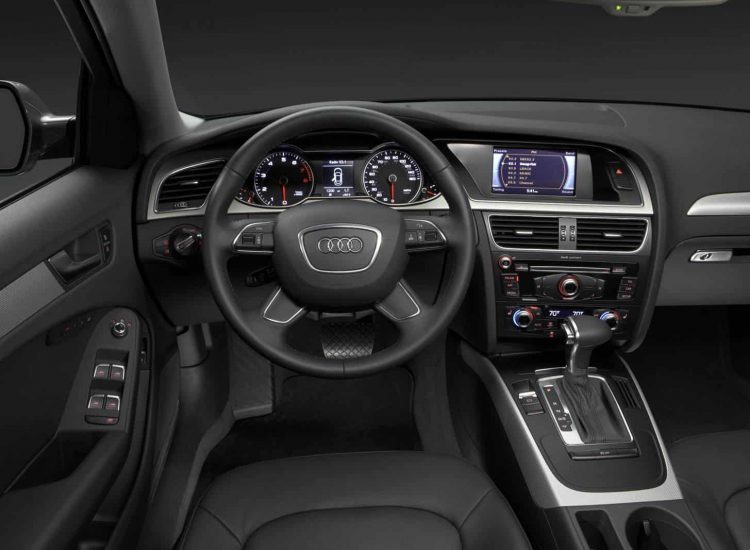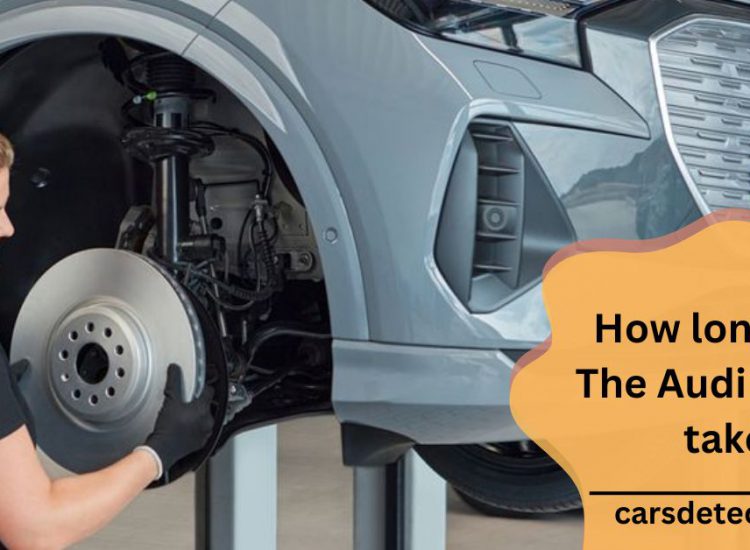The Audi A6 is a stylish and luxurious sports sedan, one of Audi’s best models. It provides a powerful ride and looks fantastic. If you’re considering an Audi A6, knowing how long it will last is essential. You might ask, how long can an Audi A6 last? How many miles can you get from this luxury car?
Toc
- 1. Table of Contents:
- 2. For the Audi A6, what is high mileage?
- 3. For an Audi A6, what is a good mileage?
- 4. Should I purchase a used Audi A6 for over $100,000?
- 5. What Mileage Does the Average Audi Breakdown?
- 6. Common Problems with Audi A6
- 7. How to Increase Your Audi’s Lifespan?
- 8. Why does lifespan matter?
- 9. What Audi A6 Models Are Safe Choices When Buying Used?
- 10. Are Audi A6s dependable?
- 11. Does maintaining an Audi A6 cost a lot?
- 12. Audis begin to have issues at what mileage?
- 13. high mileage The Audi A6 3.0 TDI
- 14. Frequently Asked Questions:
- 14.1. What factors affect the lifespan of an Audi A6?
- 14.2. Are Audi A6s expensive to maintain over time?
- 14.3. How can I ensure my Audi A6 lasts as long as possible?
- 14.4. What are signs that my Audi A6 may need immediate attention to prolong its lifespan?
- 14.5. How does driving style impact the lifespan of an Audi A6?
- 14.6. Is it worth investing in a higher-mileage Audi A6 if it has been well-maintained?
- 14.7. Can Audi A6s be reliable for daily commuting and long-distance travel drivers?
- 14.8. How does climate affect the lifespan of an Audi A6?
- 14.9. How does using high-quality fuel impact the lifespan of an Audi A6?
- 14.10. How should I prepare my Audi A6 for winter conditions?
- 14.11. Can regular detailing and care of the exterior and interior impact the longevity of an Audi A6?
- 15. Conclusion:
Audis can last up to 200,000 miles or 20 years without major repairs when well-maintained. They are reliable cars, and Consumer Reports ranks them in the top 10 for reliability among new car brands.
The lifespan of a vehicle is crucial. A car that can last for many miles will keep you on the road longer and help you save money over time. If you’re looking for more information about Audi, begin your journey with Carsdetective.
Table of Contents:
For the Audi A6, what is high mileage?
We’ve discussed that an Audi A6 should last about 200,000 miles under ideal conditions. This car’s high mileage is considered 150,000 miles or more. Although the A6 can go beyond this, you’ll likely face more problems at that point.

Higher mileage on an Audi A6 isn’t always a problem, but avoiding older models and keeping the mileage below 150,000 is best. After reaching this number, repairs become costly, making the car less economical.
For an Audi A6, what is a good mileage?
It’s essential to consider how many miles you want your vehicle to last before facing severe problems. It’s great to reach at least 130,000 miles before issues arise. Anything beyond that is a bonus if you take good care of the car.
People with long commutes will reach this mileage sooner than those who work from home or use their Audi A6 as a second car. An A6 can last nearly 20 years with proper maintenance and careful driving.
Your car’s lifespan will increase with proper maintenance. Keep up with maintenance and necessary repairs.
Read Also: Does Audi q5 require premium gas? – Get the facts about premium gas!
Should I purchase a used Audi A6 for over $100,000?
When browsing used car lots or online for used Audi A6 models, you’ll notice that cars with over 100,000 miles are much cheaper than those with lower mileage. This can be frustrating if you’re trying to save money while still getting a reliable car. Should you consider an Audi A6 with over 100,000 miles?

Buying a used Audi A6 with over 100,000 miles is safe if it has a solid maintenance history. Ideally, look for the newest model with the lowest mileage within the 100,000-mile range to minimize the risk of significant issues.
What Mileage Does the Average Audi Breakdown?
A smart approach when considering the Audi A6 is to assess its typical lifespan compared to other Audis. This helps determine whether to invest in an Audi and how the A6 compares to the brand’s average durability.
Audis last an average of 150,000 to 200,000 miles or about 10 to 13 years on the road. The Audi A6 fits well within this range, which is respectable for a sports sedan.
Read Also: Audi long press to open windows not working – A Deep Dive!
Common Problems with Audi A6
Here are some common problems that Audi A6 owners may encounter:
- Electrical Issues: Problems with the electrical system, such as malfunctioning sensors, issues with the MMI (Multi Media Interface) system, or faults in the electronic modules, are commonly reported.
- Transmission Problems: Some Audi A6 models may experience issues with the transmission, such as jerking or slipping during gear shifts, especially in older models or those with higher mileage.
- Suspension and Steering: Audi A6 owners often complain about suspension noises, premature wear of suspension components, or steering vibrations.
- Oil Leaks: Engine oil leaks, particularly from the valve cover gaskets or oil pan gasket, can occur in Audi A6 models, leading to potential oil consumption issues.
- Brake System: Some owners report problems with the brakes, such as squeaking or grinding noises, premature wear of brake pads and rotors, or issues with the brake calipers.
- Air Conditioning and HVAC: Issues with the air conditioning system, such as failure to cool correctly or problems with the climate control functions, have been noted in Audi A6 vehicles.
- Fuel System: Occasionally, Audi A6 owners report issues with the fuel system, including fuel pump failures or fuel injector problems, which can affect engine performance.
It’s important to note that the frequency and severity of these issues can vary depending on the model year, mileage, and how well the car has been maintained. Regular servicing and addressing problems promptly can help mitigate many of these issues.
How to Increase Your Audi’s Lifespan?
To increase your Audi’s lifespan and keep it running smoothly for years to come, follow these essential tips:
Follow the Owner’s Manual:
Adhere to the recommended maintenance schedule outlined in your Audi’s owner’s manual. This includes regular servicing, fluid checks, and replacement intervals. The manual provides detailed instructions on essential tasks like refilling fluids and other upkeep procedures.

Regular Cleaning:
Keep your Audi clean inside and out to prevent rust and dirt buildup and maintain its resale value. Regular washing helps protect the paint from UV damage and prevents debris from blocking windows and mirrors, ensuring clear visibility and safe driving.
Read Also: Audi A4 1.8t Now Also With 190 bhp – Comprehensive Visual Guide!
Monitor Fluid Levels:
Check your Audi’s fluids regularly, including engine oil, coolant, brake fluid, and windshield washer fluid. Address any leaks promptly to prevent damage and ensure optimal engine performance. Pay attention to dashboard indicators for fluid levels and address any persistent warnings promptly.
Protect from Sun Damage:
Park your Audi in shaded areas or covered garages to shield it from UV rays. Sun exposure can damage paint, cause dashboard cracking, and even impact engine bay components. Minimize sun exposure to maintain your car’s appearance and functionality.
Tire Maintenance:
Inspect your tires regularly for wear and maintain proper inflation levels. Underinflated tires can affect fuel efficiency, engine stress, and braking performance. Check tire pressure monthly and ensure your tires are correctly aligned to prolong their lifespan and maintain safety.
Drive Responsibly:
Practice good driving habits to reduce wear and tear on your Audi. Avoid aggressive driving, excessive speeding, and abrupt braking, which can strain the engine, brakes, and suspension components. Drive smoothly, maintain steady speeds, and navigate road obstacles carefully to protect your vehicle.
By following these tips and staying proactive with maintenance, you can significantly increase the lifespan of your Audi, ensuring it remains reliable and enjoyable for years on the road.
Why does lifespan matter?
Lifespan matters because a longer-lasting car saves money on repairs and replacements, offering better cost efficiency over time. It ensures reliability, reducing the risk of unexpected breakdowns. Vehicles with longer lifespans often have higher resale values, making them a better investment.

They have a lower environmental impact by reducing the need for new vehicle production. In short, a longer lifespan means more value, reliability, and sustainability for your investment.
Read Also: Audi Q7 years to Avoid – Stay informed and make the right choice!
What Audi A6 Models Are Safe Choices When Buying Used?
When considering a used Audi A6, the following models are safe choices:
- 1994 Audi A6
- 1995 Audi A6
- 1996 Audi A6
- 1997 Audi A6
- 1998 Audi A6
- 1999 Audi A6
- 2001 Audi A6
- 2002 Audi A6
- 2007 Audi A6
- 2008 Audi A6
- 2009 Audi A6
- 2010 Audi A6
- 2012 Audi A6
- 2017 Audi A6
- 2018 Audi A6
- 2020 Audi A6
- 2021 Audi A6
These models are known for their reliability and are less likely to have significant issues. While some may have minor problems like electrical glitches or brake issues, they are generally dependable and trustworthy choices for a used car purchase.
Are Audi A6s dependable?
Yes, Audi A6s are generally dependable. The 2024 Audi A6, for example, has a predicted reliability score of 82 out of 100, indicating high quality and reliability. This score suggests that the Audi A6 is a reliable choice, with good performance in terms of long-term durability and fewer significant issues over time.
Read Also: Audi Q7 Cargo Space – Discover the versatility of the Audi Q7’s cargo space today!
Does maintaining an Audi A6 cost a lot?
Yes, maintaining an Audi A6 can be relatively expensive. The average annual repair cost for an Audi is $987, significantly higher than the average repair cost across all brands, which stands at $652.

This higher cost can be attributed to the premium parts and specialized service required for Audi vehicles. Regular maintenance, high-quality parts, and potential repairs contribute to the overall cost of owning an Audi A6. While the A6 is known for its reliability, owners must budget for these higher maintenance expenses.
Audis begin to have issues at what mileage?
Audis generally begin to experience issues around the 60,000-mile mark. At this point, it’s essential to start having your Audi serviced and repaired more regularly. Common problems that may arise include electrical issues, engine troubles, and suspension-related concerns. Regular maintenance and timely repairs can help mitigate these issues and extend the lifespan of your vehicle.
high mileage The Audi A6 3.0 TDI
The Audi A6 3.0 TDI is known for its strong performance and durability, making it a good option even with high mileage. Here are some key points about the high-mileage Audi A6 3.0 TDI:
Engine:
The 3.0 TDI engine is a turbocharged diesel engine with good power and fuel efficiency. It’s known for its robustness and can handle high mileage if adequately maintained.
Fuel Efficiency:
Diesel engines typically offer better fuel efficiency than gasoline engines, making the A6 3.0 TDI a cost-effective choice for long-distance driving.
Maintenance:
Regular maintenance is crucial to keep a high-mileage 3.0 TDI running smoothly. This includes oil changes, timing belt replacements, and checking for any turbocharger issues.
Common Issues:
High-mileage vehicles may experience wear and tear on components such as the turbocharger, fuel injectors, and EGR (Exhaust Gas Recirculation) system. Electrical issues and suspension wear are also common concerns.
Longevity:
The Audi A6 3.0 TDI can have a long lifespan with proper care and timely repairs. Many owners report their vehicles running well beyond 200,000 miles.

Performance:
Despite high mileage, the 3.0 TDI engine performs well, offering strong torque and smooth acceleration.
Frequently Asked Questions:
What factors affect the lifespan of an Audi A6?
Factors such as regular maintenance, driving habits, climate conditions, and the model year of the Audi A6 can significantly impact its longevity.
Are Audi A6s expensive to maintain over time?
While Audi A6s may have higher maintenance costs than some brands, diligent upkeep can mitigate long-term expenses by preventing major repairs.
How can I ensure my Audi A6 lasts as long as possible?
Regularly servicing your Audi A6 at recommended intervals, using quality parts, driving sensibly, and addressing any mechanical issues promptly can help maximize its lifespan.
What are signs that my Audi A6 may need immediate attention to prolong its lifespan?
Look out for warning lights on the dashboard, unusual noises, changes in engine performance, or fluid leaks, as these could indicate underlying issues that require prompt repair.
How does driving style impact the lifespan of an Audi A6?
Gentle acceleration, smooth braking, and avoiding excessive idling can help reduce wear and tear on the engine, transmission, and braking system, potentially extending the vehicle’s lifespan.
Is it worth investing in a higher-mileage Audi A6 if it has been well-maintained?
A well-maintained Audi A6 with higher mileage can still offer reliable performance and longevity, especially if service records show regular upkeep and timely repairs.
Can Audi A6s be reliable for daily commuting and long-distance travel drivers?
Yes, Audi A6s are designed to be comfortable and reliable for daily commuting and long road trips, provided they receive regular maintenance and attention to potential issues.
How does climate affect the lifespan of an Audi A6?
Extreme temperatures, whether hot or cold, can stress components like the battery, coolant system, and tires. Proper maintenance and seasonal checks can help mitigate climate-related wear.
How does using high-quality fuel impact the lifespan of an Audi A6?
Premium fuel with higher octane levels can improve engine efficiency and reduce carbon deposits, potentially extending the lifespan of the engine components and maintaining performance.
How should I prepare my Audi A6 for winter conditions?
Winterizing your Audi A6 includes checking the battery, antifreeze levels, and tire tread and ensuring the proper functioning of the heating system to maintain reliability and safety in cold weather.
Can regular detailing and care of the exterior and interior impact the longevity of an Audi A6?
Regular washing, waxing, and interior cleaning help protect the paint, upholstery, and trim from deterioration due to environmental factors, enhancing both aesthetic appeal and longevity.
Conclusion:
In conclusion,
The Audi A6 exemplifies longevity and reliability. With regular maintenance, it can last well over 200,000 miles. Its blend of performance, luxury, and durability makes it a solid choice for discerning drivers seeking enduring value from their vehicle investment.

















